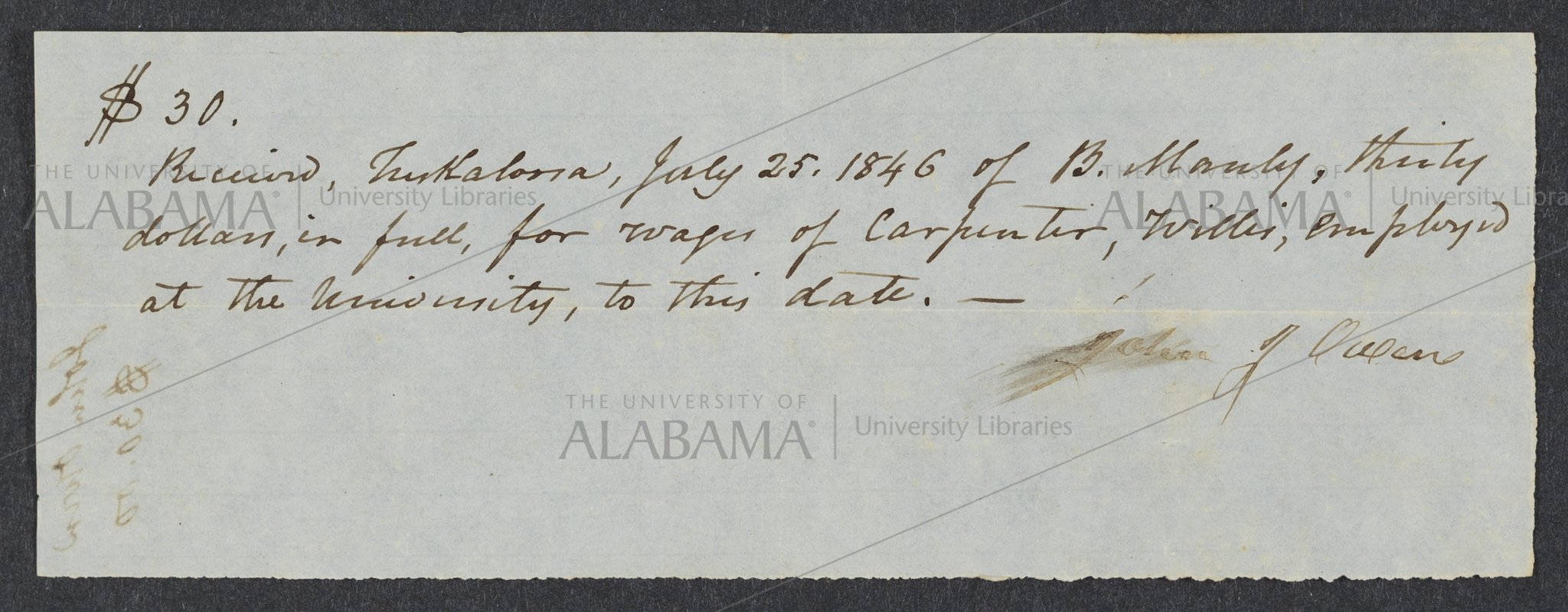
by Hilary Green, Department of Gender and Race Studies
Teaching slavery and its legacy offers unique possibilities. Since initial construction to April 4, 1865, the labor of enslaved men, women, and children had an integral role in shaping the University of Alabama (UA). By embracing this history and legacy in my classroom, I engage my students, undergraduate and graduate, with lectures, assignments, and discussions on how historical understandings can shed light on contemporary issues as well as their place at the Capstone. The strategies I suggest below have been tested and refined across a spectrum of students in both the humanities and STEAM. Moreover, the strategies are scalable.
First, you can incorporate the Hallowed Grounds tour. This alternate campus tour emerged from an African American male student’s casual remark on the lack of connection to slavery at UA during my second semester. I began research in the ACUMEN digital collections, W. S. Hoole Special Collections, and the published secondary literature. I selected sites for their historical importance and feasibility of completing the tour during a traditional Tuesday/Thursday class period. I integrated the tour into the revised 300-level course during the Fall 2015 semester. The tour enables students to examine the campus through a new lens and appreciate the work performed by enslaved laborers during all types of weather and conditions. Unable to fulfill all guest lecture requests, I have since developed a mobile-device friendly version using Adobe Spark that you may use. An enhanced audio version with accessible captions is forthcoming, but this is a good substitute. Depending on class size, students can take the tour outside of class, provide visual evidence, and write a short reflection piece on which site of memory resonated the most.
Second, you can incorporate the rich archival record into assignments. In addition to the tour, I assign each student a digital slave receipt from ACUMEN digital collections. In a survey course, I have students identify the enslaved person(s), glean information about the person’s experience (owner, UA personnel, labor performed, conversion of historical dollars to current value, and dates of service), and suggest how UA can better commemorate the enslaved individual(s) listed in the primary source [1]. For a 300-400 course, I have students conduct additional archival UA library research and create mini-biographies of the enslaved. For graduate seminars, students develop research papers that connect the secondary literature on slavery, capitalism, and emancipation to the archival record. For instance, an American Studies M.A. student explored the clothing and material culture of slavery after viewing receipts for the purchase of fabric, notions, and shoes. Traditional papers, documentaries, poetry, and other projects are both possible and not limited to specific disciplines in the humanities.
By embracing the campus history, students will gain a better understanding of the campus’s rich and diverse history. They will become better equipped to critically engage with this important period in American history and develop the necessary skills for understanding subsequent social movements. More importantly, the campus history enables students to appreciate the transformation of UA over time by exploring a group who went from property unable to receive an education to a diverse student body taught by a diverse faculty.
Hilary N. Green is a faculty member in the Department of Gender and Race Studies and serves as the co-program director of the African American Studies program. She also has a partial appointment in American Studies.